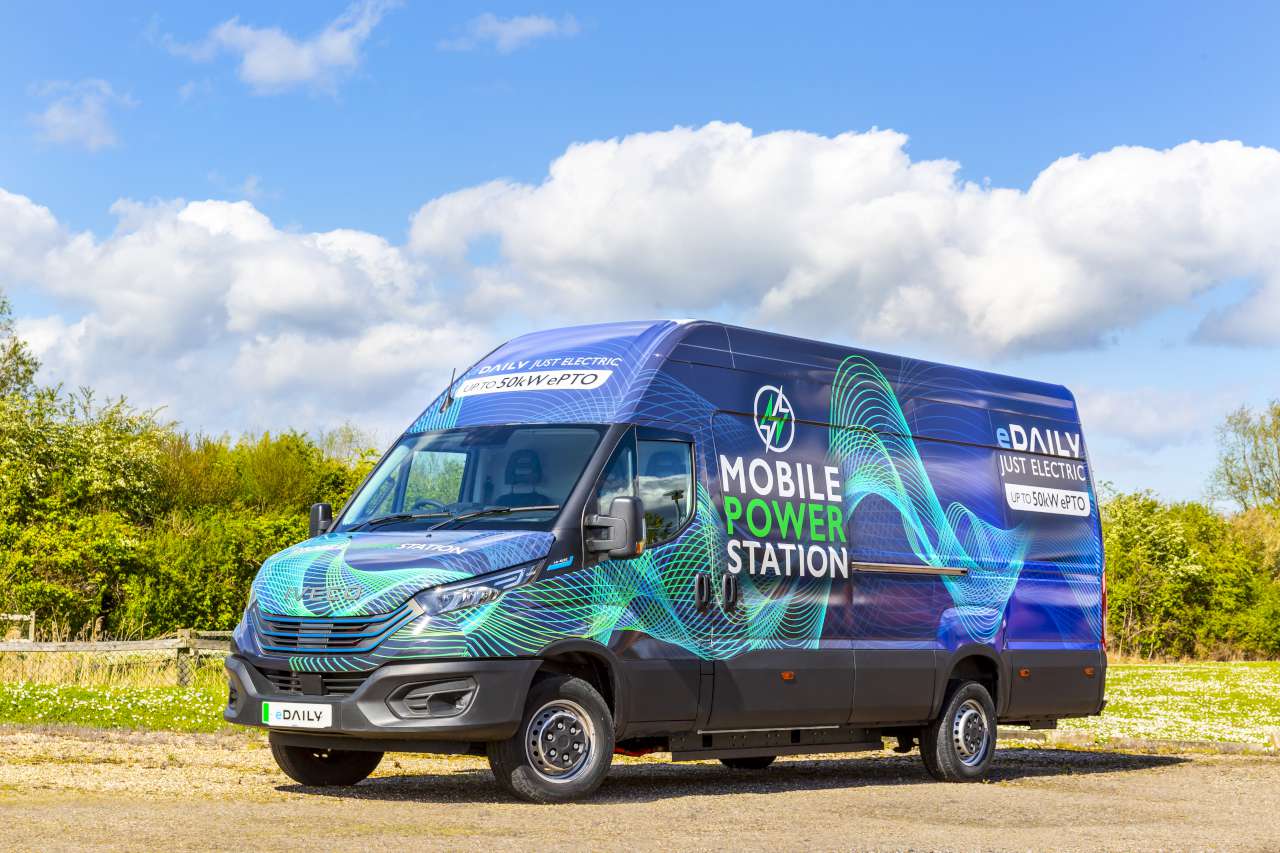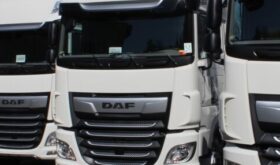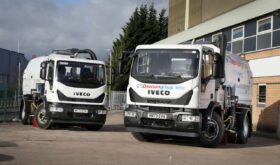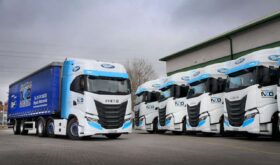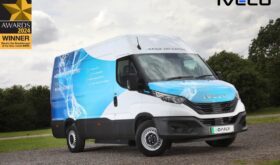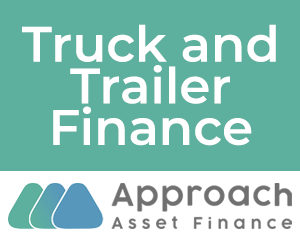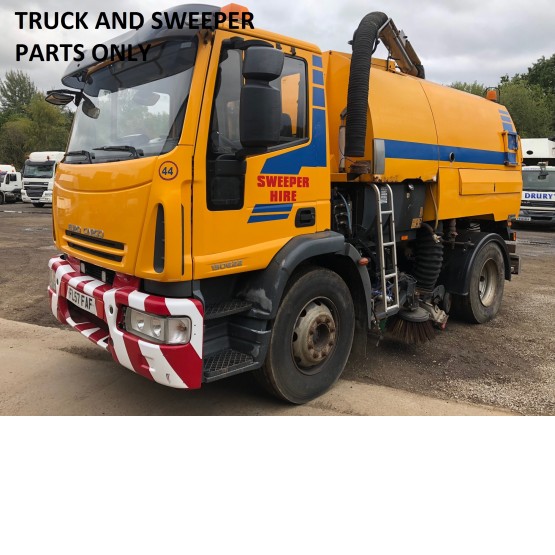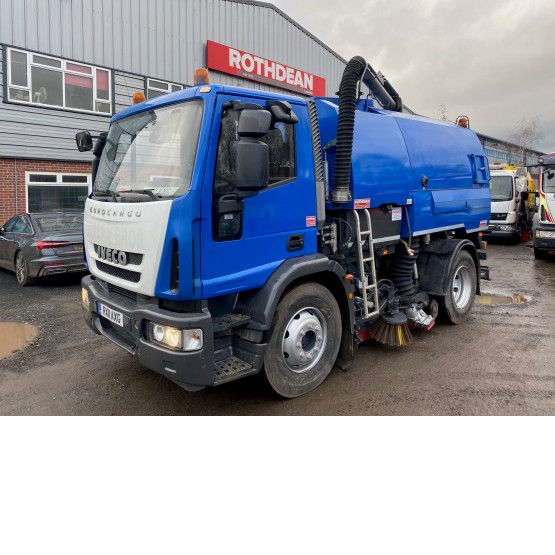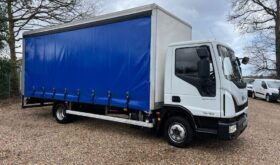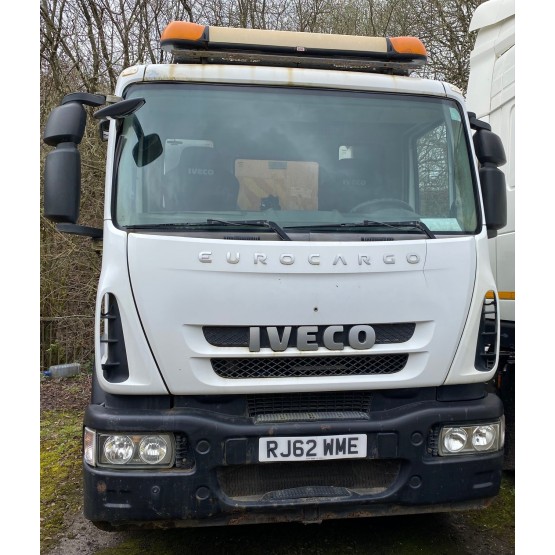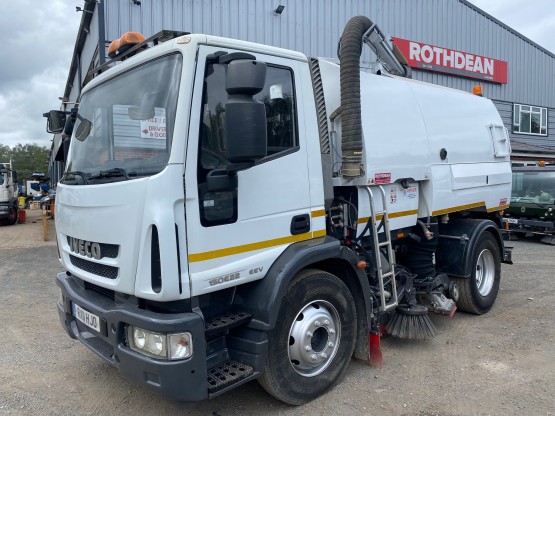For Auction in Lancashire on 2024-05-01
Iveco Trucks for Sale (436)
Thinking of buying a used Iveco truck? There are always tonnes of Used Iveco Trucks for sale and for auction on the Truckpages website. Not sure about the company? Then read on… Iveco is the commercial vehicle business that was born out of the merger of a series of truck builders in 1975. So, whilst Iveco itself does not have such a long history as many other European truck manufacturers, each of the founding companies have histories reaching back into the nineteenth century. Now part of the CNH (Case New Holland) group with UK headquarters in Basildon, Iveco remains primarily an Italian manufacturer of trucks and vans. Iveco’s main models are – in order of size – the Stralis, Trakker, Eurocargo and Daily vans.
The company’s reputation in the UK has not been the strongest, with early issues that caused the brand some problems, but certainly since 2000, their trucks and vans have been able to compete head on with the rest of the manufacturers. You should find plenty of quality used Iveco trucks for sale at Truckpages.
More Iveco Trucks Info
Iveco – A Brief Overview
Five companies came together in 1975 pooling resources and product lines to create one company. The ‘Veicoli Industriali’ arm of the Fiat conglomerate was the largest of the five, therefore headquartering the business in Turin. The remaining companies were Magirus-Deutz of Germany, Lancia Veicoli Speciali of Italy, Unic of France and OM of Brescia in Italy.
The company spent its early years rationalising the model ranges and networks of the existing businesses, whilst developing a series of joint products that was to be the future for the business.
Iveco in the UK
The launch of the Zeta, followed by the first Iveco Daily vans made little impact on the UK commercial vehicle market. It wasn’t until the 1980’s that Iveco became a name in the UK, partially thanks to the launch of the Turbo Star heavy truck range, but more importantly through the 1986 acquisition of the Ford of Europe’s truck business. Ford were very strong in the UK with their Langley-built Ford Cargo, so Iveco effectively bought their way into a best seller. It came as no surprise that the Ford name was kept on the trucks ‘Iveco-Ford’ was born.

At the beginning of the 1990s and the UK’s recession, Iveco made plenty of changes as far as the UK was concerned. The new Iveco Eurocargo was initially manufactured at Langley, but production stopped in 1997 and production moved to Italy.
In 1991 Seddon Atkinson joined the Iveco group in the UK – the manufacturer was well known for their 8 wheel tippers and history of tractor unit manufacture in the UK. At the same time Iveco bought the Spanish manufacturer ENASA which made the Pegasus range of trucks. A busy time for Iveco and did they bite off more than they could chew at the beginning of a recession?

Nonetheless, the company managed to revamp their entire range at this time- the Eurocargo, EuroTrakker (now simply Trakker), EuroTech and EuroStar, (relaced by the Stralis then the S-Way).
Current Iveco Structure
There have been plenty more changes since. 2011 saw Fiat Industrial formed, containing Iveco, CNH and Fiat Powertrains Industrial. In 2013 CNH Global and Fiat Industrial merged to form CNH Industrial NV (now a Dutch company).
Iveco Truck Models
Earlier Models
There is little chance of seeing many of the earlier Iveco models still available for sale in the UK. The exception to this is the EuroStar series – including the EuroTech and the EuroTrakker.
Iveco EuroStar (1993-2003)
The precursor to the Stralis range, the EuroStar was an evolution of the TurboStar models. Only produced for ten years from 1993, the EuroStar came with a choice of 9.5-litre engine at 375hp or a better-suited 13.8-litre 420hp unit. After 1995 the engine line up was changed and the power for the 13.8-litre was increased to 469hp. Final changes to the truck saw the use of Iveco’s Cursor range of engines starting with the ten-litre Cursor 10 at 400 or 430hp, with the 13-litre introduced later rated at 460 or 480hp.
Euro Trakker (1993-2003)
Only worth mentioning here, as many people still call Iveco’s current on/off road version the EuroTrakker, when it is simply known as ‘Trakker’.
Iveco (Ford) Cargo (1986-1991)
This was a much-loved truck in the UK – especially as it was built in Langley, near Slough. Many truck buyers still call the current Eurocargo an Iveco Ford. It was due to Iveco’s acquisition of Ford’s UK truck business that the brand started to take off in the UK.
The Iveco-Ford Cargo was replaced by the Eurocargo in 1991 – even though the Eurocargo was being made at Langley until 1996.
Current Models
Iveco Daily
For all intents and purposes, the Iveco Daily is a van, however, it is engineered more like a truck with a ladder frame chassis and is available in gross vehicle weights of up to 7 tonnes. It has a long history, dating as far back as 1978 – one of the first vehicles produced by Iveco.
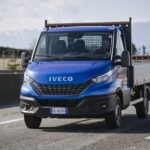
1992 – Second Generation
The first generation lasted until 1992 and was replaced by the range that lasted until 2000. Although there were two models available – a 3.5 tonner and a 5 tonne version, the smaller one was dropped in the UK as it competed directly with the Ford Transit. 1996 saw improvements in the engine with a much-needed 122hp version of the 2.8-litre turbo diesel.
2000 – Third Generation Iveco Daily
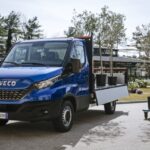
The updated Daily received a 2.8-litre, common rail diesel engine rated at 90hp (non-turbo) and a turbo charged 106 and 125hp increasing to 146hp, and was available with a natural gas engine – the first of its kind.
2003 – New 2.3-litre Engine
The downsized 2.3 litre common rail diesel replaced the ageing 2.8-litre motor at the lower power ranges of 101 and 120hp. One year later saw the top-power engines once more with an excellent 3-litre 136 and 166hp engine.
2006 – Fourth Generation Daily
This generation had a modern facelift to the front end and coincided with the Euro 4 standard. As a result there was a change to the engine lineup. Still with the choice of 2.3 litre or 3-litre, there were still some underpowered engine options available, but the UK’s best seller was the 116hp 2.3-litre and the 146hp version of the three-litre.
2011 – Fifth Generation
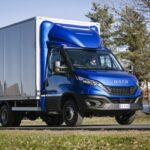
There were plenty of changes to the Daily for this version – buyers are recommended to go for this upgraded version rather than buying a late ‘fourth generation’ as it looks similar to the current model.
Plenty of engine choices – again from the 2.3 or 3-litre diesels. Starting at 106hp (for the 35S11 model, for example) – not many of these have been sold – buyers tend to favour the 126hp version found in the 35S13 or the 146hp 35S15. The higher output 170hp engine is typically found higher up the weight range on a 65S17, for example.
2014 – Daily Sixth Generation

A significant facelift gave the Daily ‘Marmite’ looks. Many people loved the look while others thought it ugly. The design mirrors that of the newest Eurocargo to give the ranges a ‘family’ feel.
A facelift for Euro 6 saw the range of engine options reduced, with the lower powered models being dropped. Now buyers could choose the 146 or 170hp diesels or the 136hp natural gas version.
2019 – Euro 6D Daily
Continuing with the choice of 2.3-litre or 3-litre engines from 116 to 210hp, the current model Daily goes up to an impressive 7.2 tonnes GVW. Packed with new safety features including driver aids such as City Brake Pro and queue assist. For full details on the current Daily visit the Iveco Daily page at Truckpages.
Iveco Eurocargo

Iveco’s middleweight truck has had a long and impressive history. There are hundreds of thousands of these trucks running around Europe in many shapes and sizes, carrying out a huge range of roles, from fire truck to tipper, fridge truck to road sweeper.
Iveco Stralis
This is Iveco’s truck that serves the 19 to 44 tonnes GVW categories.
2002 – Stralis Launch
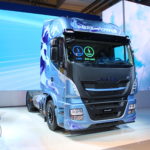
Launched as far back as 2002, it used the structural body of the outgoing EuroStar model but a new exterior and interior. The Stralis introduced a choice of cab widths – the 2.28m Active Time/Active Day as well as the 2.48m Active Space Cab. A choice of Cursor 10 or Cursor 13 engines with the 6-cylinder, 10-litre Cursor 10 offering outputs of 400 to 430hp and the 13-litre 6-cylinder Cursor 13 with 480 or an impressive 540hp.
The Stralis was the first truck to fit an automated gearbox as standard – ZF’s 12AS2301 or 16AS2601 for the Cursor 13.
2007 – Facelift for Euro 4/5
Three engine options available in the Cursor 8, 10 and 13 with outputs from 310 to 560hp
2014 Stralis Hi-Way Launched for Euro 6
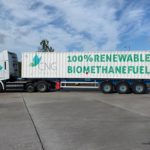
As with all truck makers, Iveco had to update the Stralis for the new regulations. The big difference was that the Stralis reached the standards only using SCR to clean up emissions, whereas nearly all the other manufacturers used a combination of EGR and SCR.
This meant less reengineering of the cab for increased cooling and a lighter overall truck. Not to mention the money saved in R&D in changing the cab and installing an EGR system.
2016 – Stralis XP Launched
With re-engineered motors, the XP was launched alongside Iveco’s natural gas-powered Stralis NP. Complete with all-new rear axles and a new-generation, 12-speed ZF automated transmission – the ‘Hi-Tronix’ and a revised, lighter rear suspension set up, fuel consumption was greatly improved over the original Euro 6 model – Iveco claimed by nearly 10%.
2019 – Stralis Model replaced by S-Way
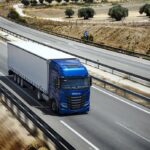
With a brand-new cab, Iveco took the opportunity to rebrand their flagship top-weight truck the S-Way. With improved aerodynamics, Iveco claim up to 4% fuel improvement on the old Stralis cab and details such as improving braking distances by up to 15%. Few changes to the driveline from the 2016 upgrades, but the truck looks a lot more modern and would grace any fleet.
S-Way Launched 2019
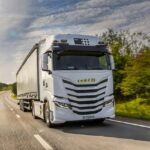
There was a lengthy delay to the introduction of the S-Way to the UK thanks to the impact of the COVID-19 pandemic. The first right hand drive examples arrived in the first quarter of 2021.
A modern-looking, brand new cab design alongside the availability of natural gas versions may give Iveco the impetus in this segment of heavy trucks and tractor units that it has missed in the UK historically.
Iveco Trakker
2004 – Launch of Trakker
The Trakker replaced the EuroTrakker back in 2004 – initially with Euro 3 engines – no Cursor 10, instead the Trakker was launched with the Cursor 8 and 13 engines. The lightweight 8-litre usedfor high payload operations with 270, 310 and 352hp and the Cursor 13 for duty cycles that involve severe gradients and stop start work.
2006 Euro 4 & 5 Trakker Launched
2007 New Cab for Trakker
2013 Launch of Euro 6 Trakker Hi-Land
2021 – Trakker Replaced by T-Way
Iveco T-Way
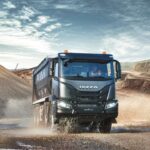
Joining the X-Way and the S-Way, Iveco replaced the Trakker brand with the new T-Way for heavy duty off-road applications. Lighter than its predecessor, the truck uses either the 9- or 13- litre CURSOR engines with a maximum rating of 510hp – 10hp higher than the outgoing Trakker.
Iveco Stralis X-Way

Launched in 2016, the X-Way is a cross between the Stralis and the Trakker, taking the best parts from each to create a truck that is efficient on the road, but able to cope with more uneven grounds of building sites. With this comes excellent unladen weight, offering great payloads for operators.
Latest Iveco Trucks News
Electric Iveco Daily ePTO to Power Industry
Powering heavy duty tools and equipment has always been a challenge when operating remotely with a van. At this year’s CV Show, Iveco demonstrated their solution to the problem with their Iveco eDaily ‘Mobile Power Station’ has made its debut at the 2024 Commercial Vehicle show as part of the EV Café Village. The Iveco eDaily’s modular battery setup and up to 50kW ePTO onboard power is able to power heavy-duty equipment and bodies such as compactors, fire-fighting equipment, road maintenance machinery, and gully cleaners. Designed to showcase the Iveco eDaily and its exceptional versatility, the Mobile Power Station is…
Who Owns Who in the Truck World?
The automotive industry in general is constantly involved in buying and selling competing businesses. This is absolutely the case in the worldwide truck manufacturing industry. Looking at the short list of truck makers currently selling their vehicles in Europe you would be tempted to think that every single one is independent of each other. You would be wrong. DAF Trucks now owned by PACCAR after some tumultuous years in the 1990s Let’s take a look at all of the major manufacturers operating in Europe: DAF Trucks Isuzu Trucks Iveco Trucks MAN Truck & Bus Mercedes Trucks Mitsubishi Fuso Trucks Renault…
75 Strong Iveco Eurocargo Road Sweeper Order
Business to Business and asset funding specialist Dawsongroup plc has taken delivery of 75 IVECO Eurocargo 16-tonne municipality vehicles (ML160E22K), complete with Bucher Municipal sweeper bodies to add to Europe’s largest short and long term sweeper rental fleet. Purpose Built Chassis and Body Roadsweepers might not cover huge mileage, but they need to be durable as their mission involves heavy equipment and a demanding stop/start environment. The Eurocargo is an ideal platform for this challenging mission courtesy of its tough 3350mm purpose-built sweeper chassis which delivers excellent manoeuvrability in busy urban environments. Dorking-based Bucher Municipal supplied and fitted the…
Flexible Iveco S-Way trucks join the growing North Kent Distribution fleet
Supplied by Acorn Truck Sales, four new Iveco S-Way 530hp 6x2 (AS440S53TX/P) and three flagship Iveco S-Way 570hp 6x2 (AS440S57TX/FP) have recently joined North Kent Distribution’s fleet of 50 vehicles. The company knows all about efficient fleet management and what a difference having the right truck for the mission makes. With different power ratings at its disposal, North Kent Distribution can maximise efficiency and ‘mission match’ each truck. The Cursor 13 engine powers both variants, with the Iveco S-Way 530hp supplying an excellent blend of capabilities and efficiency, while the most powerful Iveco S-Way 570hp delivers ease of performance when…
IVECO eDaily wins Electric Van Gong
The IVECO eDaily has won the ‘Electric Van Breakthrough of the Year: Model’ at this year’s Fleet News award event. Judged by a panel of industry experts, the IVECO eDaily was recognised for its innovations in eLCV technology that operators work even the most demanding missions to go electric without compromise. The judges commented: “From a technical point of view, IVECO is very forward-thinking. With the IVECO eDaily it takes a mission-critical approach that mirrors diesel van operation, enabling all customers to consider EV no matter the use case.” The IVECO Daily has long been a dependable fleet workhorse, with…
For Auction in Lancashire on 2024-05-01
For Auction in Lancashire on 2024-05-01
For Auction in Lancashire on 2024-05-01
Lot No: 3269 *DONCASTER* DAY CAB, A/C, MANUAL RAMP, STEEL SUSP, REAR DOOR, REAR VIEW CAMERA MoT: 2024-06-01* Price is Plus VAT * Reg No: HY23WUG * Seller: DIRECT FROM NOVUNA VEHICLE SOLUTIONS*...
For Auction in Lancashire on 2024-05-01
* LIVINGSTON * TOW BAR, ELECTRIC WINDOWS, REMOTE CENTRAL LOCKING MoT: 2024-10-20* Price is Plus VAT * Reg No: PK68EXU * Seller: DIRECT PLANT HIRE COMPANY* Fortnightly auctions featuring stock from Doncaster, Hemel...
For Auction in Lancashire on 2024-05-01
*DONCASTER* AD-BLUE, A/C, SIDE LOAD DOOR, TOW BAR, E/WINDOWS & MIRRORS* Price is Plus VAT * Reg No: NU21USW * Seller: DIRECT FINANCE COMPANY* Fortnightly auctions featuring stock from Doncaster,...
*DONCASTER* DAY CAB, A/C, STEEL SUSP, EDBRO TIPPING GEAR, WEIGH SYSTEM, REAR VIEW CAMERA* Price is Plus VAT * Reg No: YL64CMZ * No. of former keepers: 1 * Seller: DIRECT COMPANY* Weekly auctions...
Lot No: 40086.0 7m - BODY - LENGTH - Steer - CONFIGURATION - WITH - Spring - SUSPENSION. ~ Stereo: CD, Interior: Cloth, Cruise Control, Reversing Camera ~1VAT Status: Commercial (plus VAT) MoT: 2024-10-31. YE65BYA Lot no: 40086.0
Chris Hodge Commercial is...
For Auction in Lancashire on 2024-05-01

